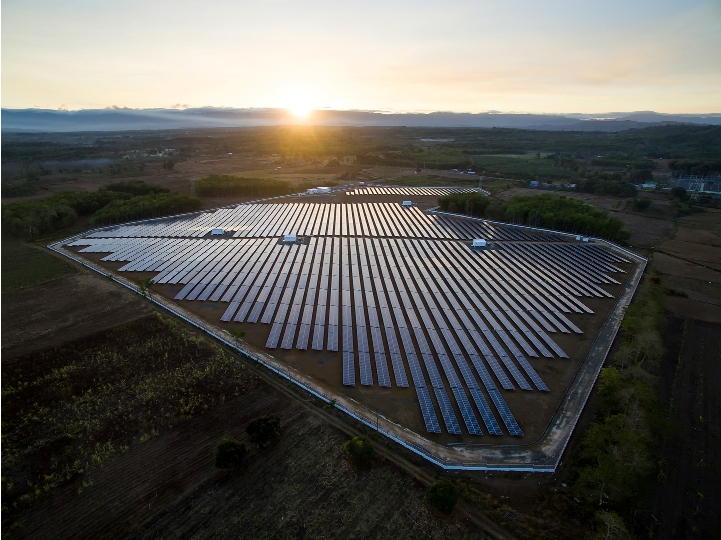While solar energy is the rising star in India’s power firmament, multiple challenges need to be met before the ambitious 2022 targets can be achieved, notes Anurag Garg. He also observes that given the tremendous energy demand in India, which is slated to rise further, and the focus on clean energy due to soaring pollution levels, there is immense potential for solar power in India.
‘The sun never sets on the British Empire’ was a popular phrase during the colonial era. In the sunrise segment of solar energy, this can be paraphrased as: ‘The sun never sets on the solar sector.’ Indeed, exponential technology advances are lowering solar energy rates like never before, widening its scope for mass usage.
In the third quarter of 2018-2019, India installed 1.2 GW of large-scale projects, increasing the current capacity in the first half to 1.9 GW. However, when compared to last year, the installed capacity declined by 43%. Despite the slowdown in the utility-scale capacity, the rooftop solar sector is growing annually at a rapid pace of 70%. As per reports,irrespective of the problems such as policy uncertainty or transmission infrastructure, the solar sector is benefiting from sharp falls in module costs, plunged to over 30% in the past nine months.
Burning Bright
Given the tremendous energy demand in India, which is slated to rise further, and the focus on clean energy due to soaring pollution levels, there is immense potential for solar power in India. Although wind power also holds potential as a green energy resource, its inherent constraints and the swift rise of solar have to some extent impacted the former’s growth. Moreover, solar tariffs are extremely competitive and the power is directly transferred to the grid. It’s no surprise that renewables comprised a major part of last year’s capacity addition while within the renewable energy segment, solar was predominant vis-à-vis the capacity addition contribution.
It is imperative that every state shoulders the onus of upgrading their T&D system as per the increase in the local installed capacity. Local initiatives in the solar energy segment will be the best way of speeding up deliverables.
That’s not to say, however, that it is all smooth sailing for solar energy. One of the biggest barriers in properly tapping the country’s solar potential remains the lack of an efficient and reliable T&D (transmission and distribution) system that can handle the type of solar energy being transmitted to the grid. For coping with the additional electricity loads, transmission lines are yet to be adequately upgraded. Some of the challenges also include the risk of a system collapse, making the T&D line upgrade all the more crucial.
In this connection, it is imperative that every state shoulders the onus of upgrading their T&D system as per the increase in the local installed capacity. Local initiatives in the solar energy segment will be the best way of speeding up deliverables.
Power projects typically have long gestation periods and extended timelines in ensuring long-term performance. The criticality of driving global quality standards assumes importance because new technologies and applications are becoming more popular with every passing year. These include mono-PERC, floating solar, bifacial modules, half-cut cells, glass-glass modules, etc. Needless to state, each application comes with unique requirements. For example, floating solar plants run a greater risk of moisture ingress and consequent corrosion compared with ground-mounted power plants.
Energy Specialists
Be these issues as they may, there is nevertheless help at hand as companies specialising in energy efficiency and management offer comprehensive energy solutions – all under one roof. To elaborate, Schneider Electric is a global leader in integrated energy solutions. Backed by its worldwide experience in energy management, the organization offers robust services spanning digitisation, decarbonisation and decentralisation. With its vast presence in energy distribution, it has been supporting the solar power and smart city projects, among others. It has also been contributing majorly to utility-scale solar projects, including commercial rooftops, mini-grids, microgrids and storage projects.
Schneider Electric also has its own central and string solar inverters for large industrial & commercial buildings, utility-scale power plants and rooftop projects as well as hybrid inverters that are used in off-grid systems or where storage is needed for the evening hours. As a result, a large part of Schneider Electric’s solar business is around megawatt-scale ground-mounted projects. Here, the company largely works with IPPs. Then there is the commercial rooftop business where the company works with system integrators or partners who are actually putting these systems on the roof of industries, commercial offices, buildings and other institutions.
Such solutions and services from private companies will become indispensable as India seeks to meet its ambitious power targets for 2022. The country’s total peak power demand is expected to rise to 235 GW by 2022. While the Centre plans to have 175 GW of total renewable energy capacity by 2022, solar is slated to account for three-fourths of this, at 100 GW.
In other words, solar capacity will need to increase four times if the target is to be met. The tasks for solar players – public or private– are clearly cut out.
Anurag Garg is Vice President—Solar Business, Schneider Electric India.

